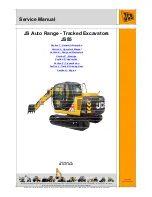
5
GENERAL SAFETY GUIDELINES
Safety of the operator is one of the main concerns in designing and developing a new piece of
equipment. Designers and manufacturers build in as many safety features as possible.
However, every year many accidents occur which could have been avoided by a few seconds
of thought and a more careful approach to handling equipment. You, the operator, can avoid
many accidents by observing the following precautions in this section. To avoid personal
injury, study the following precautions and insist those working with you, or for you, follow
them.
Replace any CAUTION, WARNING, DANGER or instruction safety decal that is not readable
or is missing. Location of such decals is indicated in this booklet.
Do not attempt to operate this equipment under the influence of drugs or alcohol.
Review the safety instructions with all users annually.
This equipment is dangerous to children and persons unfamiliar with its operation. The
operator should be a responsible adult familiar with farm machinery and trained in this
equipment’s operations.
Do not allow persons to operate or assemble this unit until they
have read this manual and have developed a thorough understanding of the safety
precautions and of how it works.
To prevent injury or death, use a tractor equipped with a Roll Over Protective System (ROPS).
Do not paint over, remove or deface any safety signs or warning decals on your equipment.
Observe all safety signs and practice the instructions on them.
Never exceed the limits of a piece of machinery. If its ability to do a job, or to do so safely, is
in question -
DON’T TRY IT.
SAFETY DECAL CARE
•
Keep safety signs clean and legible at all times.
•
Replace safety signs that are missing or have become illegible.
•
Replaced parts that displayed a safety sign should also display the current sign.
•
Safety signs are available from your Distributor or Dealer Parts Department or the
factory.
How to Install Safety Signs:
•
Be sure that the installation area is clean and dry.
•
Decide on the exact position before you remove the backing paper.
•
Remove the smallest portion of the split backing paper.
•
Align the decal over the specified area and carefully press the small portion with the
exposed sticky backing in place.
•
Slowly peel back the remaining paper and carefully smooth the remaining portion of
the decal in place.
•
Small air pockets can be pierced with a pin and smoothed out using the piece of decal
backing paper.


























